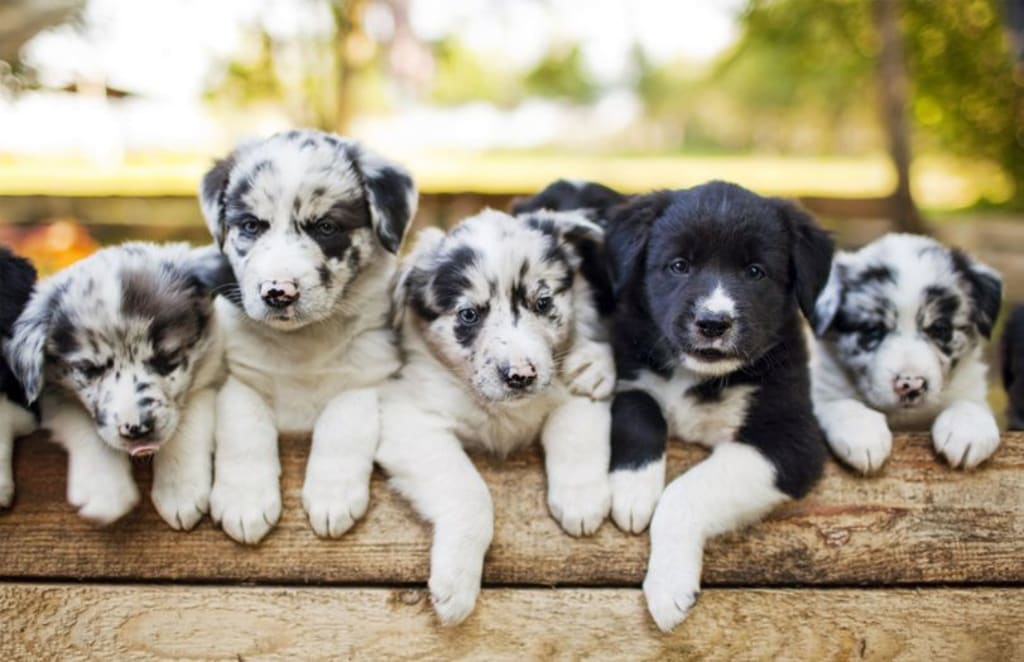Understanding Genetics for Dog Breeders
The history of dog breeding is a large subject, and to deal with each separate breed, would entail a volume in itself.

Here I shall give only a brief outline of the history of research in genetics. To begin with, the dog goes far back into antiquity. Just where or when he first originated it would be impossible to say, but we do know that he is frequently mentioned in the Scriptures.
To go farther back, somewhere around the year 1500 BC, we find that the dog was not held in very great esteem. At the time in which Deuteronomy was written, the "price of a dog" was considered an unworthy offering to be brought to the altar.
In 1865, the Augustinian abbot, Gregor Johann Mendel, discovered certain laws for the inheritance of characteristics from one generation to another, through the cultivation of the common variety of garden pea. He studied the relation of true-breeding types within a species, giving his attention, particularly to the way in which sharply contrasted pairs of characteristics are inherited.
He kept accurate pedigree records, and in each case found the results to be the same. The first cross or breeding showed only one of the two characteristics, which had marked the parents. Mendel called the characteristic, which came out most strongly, the dominant member of the two, and the other, the recessive.
These plants were then allowed to become self-fertilized; the seeds were kept and sown separately. This second generation consisted of plants having the dominant characteristic, and also others having the recessive. In every four, on the average, three showed the dominant and one the recessive.
When the same experiment was carried out with the plants of this second generation, it was found that every one which had shown the recessive characteristic bred true, while of those which had exhibited the dominant, only one out of three bred true. In other words, the characteristics inherited by the second generation come from a chance combination, and can only be predicted on paper.
Let us apply this to dog breeding for a moment, and see what we get. Suppose a spaniel bitch that you own is well up on the leg, short in the body, with a good back line and tail set, but a little weak in head development. Obviously, if you can procure puppies which combine a strong head with the good points of the bitch, you will have made a noteworthy advance.
Your next problem is to find a stud whose dominant feature is a strong head, and whose body characteristics and blood lines approximate those of the prospective dam as nearly as possible. Then, provided a good body is a dominant characteristic of the bitch, and a strong head of the stud, the resulting puppies should combine these features. However, should these characteristics of the sire and dam be second-generation characteristics, the likelihood of the puppies inheriting them will be a chance combination.
Mendel spent ten years on his experiments, but when he had given his results to the world they were promptly forgotten, while students of heredity wrangled over the theories of Weismann and Lamarck. However, in 1900 three men simultaneously brought it all to light again. At the start of their investigations the exceptions to Mendel's laws received more attention than they should have, and many conservative investigators decided that Mendel was wrong. Nevertheless, it is now realized that Mendel's work was valuable, and provided the basis for all future important work on genetics.
Mendel's experiments with the garden peas showed the way in which the laws of inheritance work, and brought out the truth of the conclusion, that the chance of breeding good dogs increases in direct ratio with the quality not only of the parents, but of every dog in all the generations behind them.
Understanding the basics of genetics is an essential for all dog breeders. Only then can you make an informed selection of bitch and stud.
The above information will give you a good start on this fascinating subject. Author: Betty Glauder is a student. She grew up in Aurora, Colorado. She studies at University of Colorado and works at online coursework help service as writer. She is a Greenpeace volunteer. Also she is an amateur hip-hop dancer.







Comments
There are no comments for this story
Be the first to respond and start the conversation.